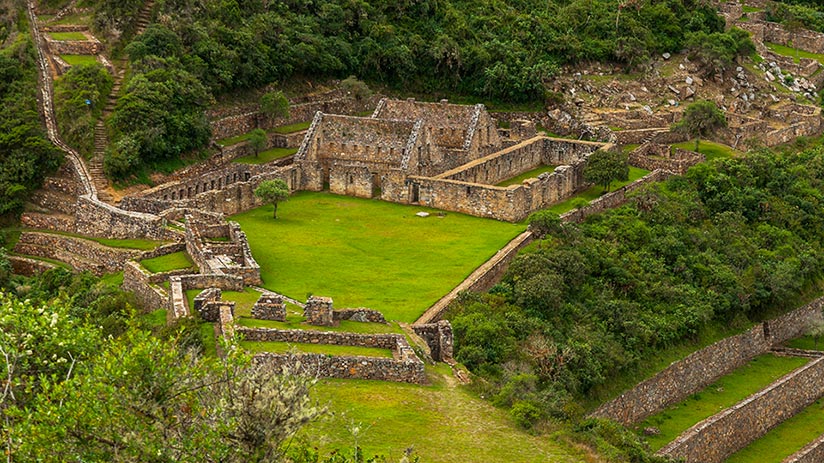Choquequirao is a fascinating archaeological site in the Peruvian Andes, similar to Machu Picchu. Some even call it the younger sibling of the Wonder of the World. The only way to get to this incredible site is through a classic 4-day trekking hike.
This trek has rewards like the Inca Trail. It features beautiful landscapes and impressive Inca ruins in Peru. We have written an article with experts from Machu Travel Peru. The article contains all the information you need to know about the Inca citadel. It is one of the best alternative or complementary tours to Machu Picchu. If you have enough time, we highly recommend you undertake this route.
Choquequirao ruins, the forgotten sister of Machu Picchu
- Choquequirao overview
- History of Choquequirao
- How to get it
- Choquequirao trek 4D/3N
- Touring the citadel
- Two alternative routes to Choquequirao
- Campsites in Choquequirao
- The best time to visit it
- What to bring
- Choquequirao on your own or within a tour?
- The cost of visiting the ruins
- An experience that is worth it
Choquequirao overview
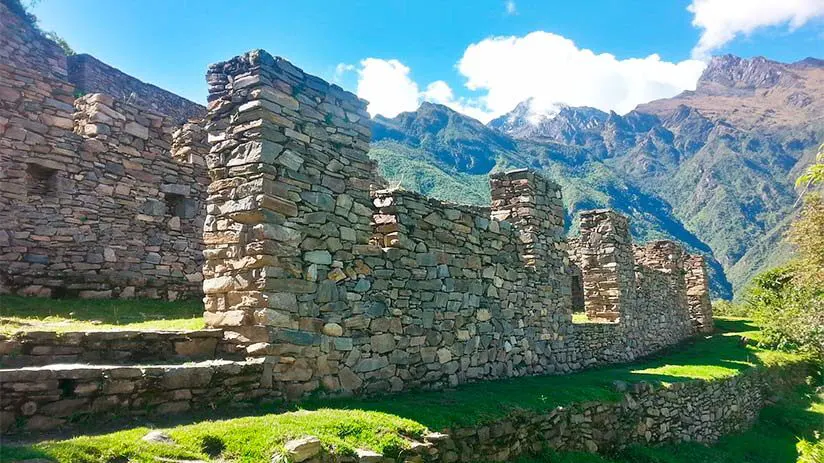
Choquequirao is one of Peru’s most remote Inca ruins (known as the cradle of gold). This old building is 3,050 m. (10,000 ft.) high above the Apurimac River canyon on a flat hill. The complex was built between the 15th and 16th centuries, and historians believe it served as an Inca administrative checkpoint and place of worship.
Twelve areas of the site remain after many centuries. Each region has different temples, houses, and baths. Visitors can explore and enjoy these attractions. Since most structures are underground, only 40% of the site’s totality is discernible.
You should take a full day to explore it without considering the time it will take. Besides, the complex has architecture and structures similar to Machu Picchu’s. It comprises agricultural terraces, massive walls, and buildings with steep roofs. It is estimated that this Inca complex was built about 200 years before the Spanish conquest. As with Machu Picchu, the reason why it was abandoned is still unknown. Its remote location doesn’t make it as famous as Machu Picchu, but its views are unparalleled.
This trek in Peru is less famous than Machu Picchu, but it is usually calm, peaceful, and not crowded. On the day of your visit, you will probably have the ruins to yourself, along with a few others.
History of Choquequirao
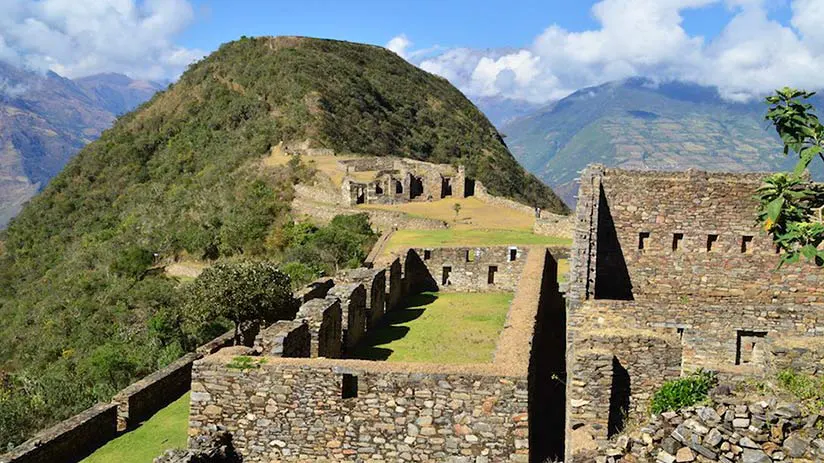
A settlement of the Inca Empire dating from the 15th and 16th centuries. Much of its history is theoretical. However, strong evidence indicates that people built it between 1418 and 1471. Pachacuti Inca Yupanqui is credited with its construction. During that period, Cusco became a great empire, expanding throughout western South America.
Some experts think this fortress was built as a strategic location to oversee Vilcabamba. Vilcabamba was the main city and government hub of the Inca State after the Spanish took over Cusco. When Tupac Inca Yupanqui became ruler, the Incas made changes and grew their empire to its current size. People believe the Inca refuge was built around the same time as Machu Picchu.
Its building process can be divided into two different stages. The first stage was under the command of Pachacuti Inca Yupanqui. The second stage was under the control of his son Tupac Inca Yupanqui, who expanded the complex that we know today. At the same time, during the Spanish conquest, the site served as one of the last strongholds of the Incas. The Inca complex and Vilcabamba mountain range were where the ruler Manco Inca, the last Inca in exile, hid.
The site was supposedly abandoned around 1572 when the Spanish authorities executed Tupac Amaru I (son of Manco Inca). In 1710, someone rediscovered it, but others looked down upon it for not finding precious metals around it. Fortunately, the well-known Hiram Bingham revisited it in 1909 and carried out the corresponding excavations.
Visit Choquequirao to fully experience discovering the ancient Inca citadels. Also, if you are planning a trip to Machu Picchu, let me tell you that you will love Choquequirao.
How to get it
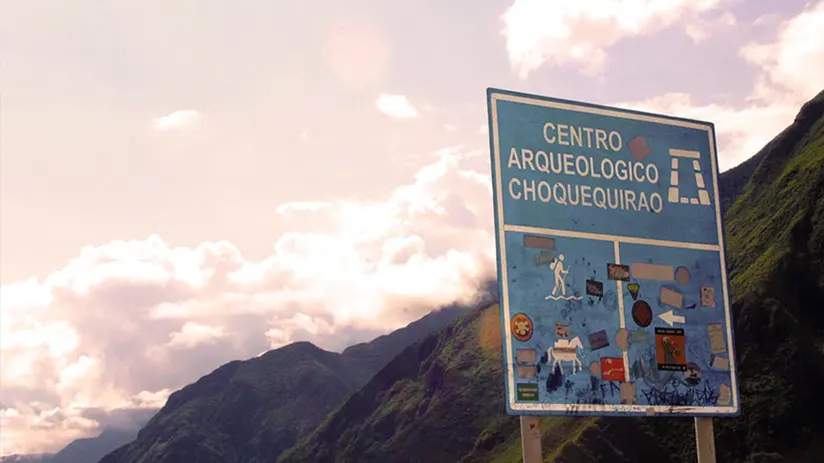
When visiting Choquequirao and the ancient ruins, one must take a hiking route for up to four days. This is the classic four-day trek, but we will discuss this hike later. The only way to get there is by using the current routes. However, the government plans to build a cable car ride in the future, making access easier in the Peruvian Andes.
Focusing on ours, we will begin to say that all trekking routes to this Inca wonder depart from a quaint town called Cachora. So, in this section, we will detail the forms to get to this town from Cusco. Cachora lies west of Cusco, exactly 16 km. away (a 3.5-hour drive), along a paved road.
- Take a taxi from your hotel to the Cusco bus terminal station (It Costs 8 to 10 Soles / $2.5).
- Once you arrive at the bus terminal, get someone heading to Abancay. You can acquire your bus ticket personally early that same day at the counter of your preferred company. You can also buy them online days in advance. Cruz del Sur, Civa, Oltursa, and Movil Tours are popular bus companies.
- When starting the bus trip, remember to ask the driver to stop at “Ramal de Cachora”. This is approximately 150 km. or 03 hours from the start point.
- Of course, during the trip, you must pay attention to the signal on one side of the road, with the inscription “KM. 148”. That will be your bus stop. The price of the buses, one way to Apurimac canyon, is between $9 and $15.
- At KM. 148, you have two options. You can share a minibus to Cachora for 5 Soles ($1.50). Alternatively, you can take a taxi directly to Cachora for 30 Soles ($8). Be careful; you must learn to negotiate because drivers can change their prices based on how busy they are that day.
- If you missed the bus to “Ramal de Cachora” in Abancay, you can share a minivan for $1.5 or 5 Soles to get there.
Choquequirao trek 4D/3N
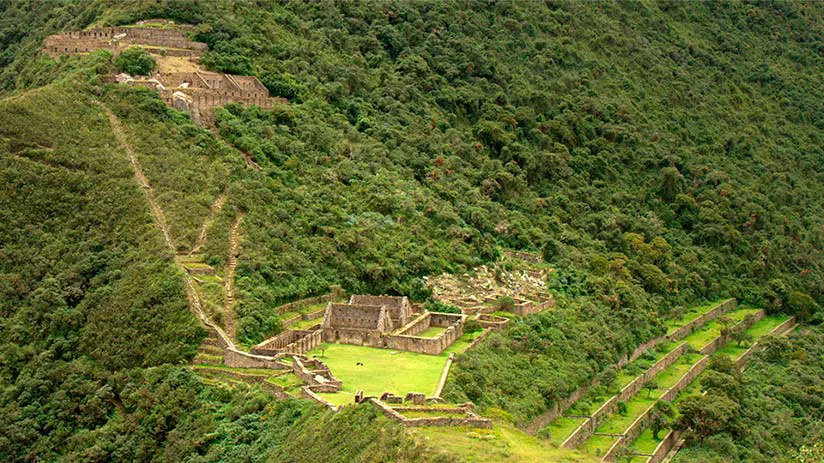
Choquequirao is considered the best trekking in Peru by different international media, and we agree. That’s why we’ll share everything you need about this trek. Most of the tours to this citadel start in the quaint town of Cachora. Travelers will find a great variety of options and alternative routes to the ancient Inca citadel. However, the most popular option is the classic four-day and three-night trek.
1. The first day: Cachora – Santa Rosa
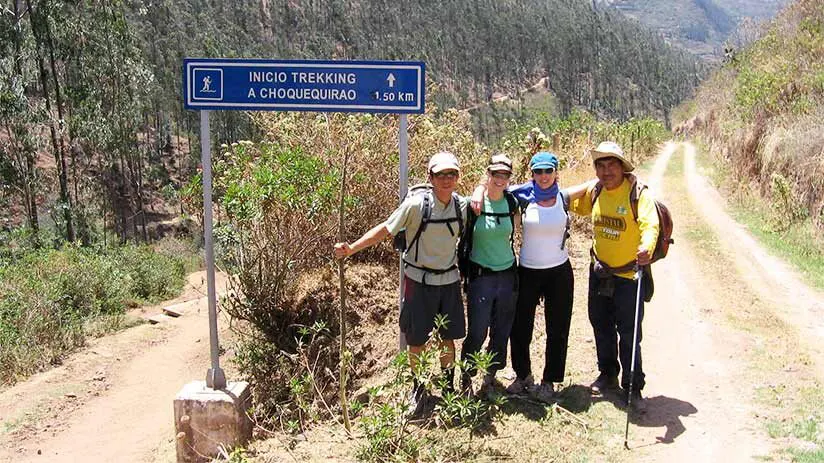
- Distance of trekking: 27 km. (If you take a taxi 13 km.)
- Trek duration: From 5 to 7 hours
- Highest point: Kapuliyoq lookout 2,915 m.a.s.l.
- Gradient: Moderate
After arriving at the picturesque town of Cachora, you will head towards the Capuliyoc lookout or Kapuliyoq pass (2,915 m.a.s.l). Of course, if you want to reduce time, you can take a taxi to get to the lookout, the taxi trip last 30 minutes, you will cut over 13 km. and the cost will be around $8, approx. This Capuliyoc pass is the starting point for the trekking route.
Just a few hours of downhill will take you to the camp Playa Rosalinas, located about 1600 meters above sea level. Most hikers take a little rest, have lunch, and continue the trek with an ascent to the next campsite, Santa Rosa. There, you will rest for the night and have a delicious dinner.
2. The second day: Santa Rosa – Marampata
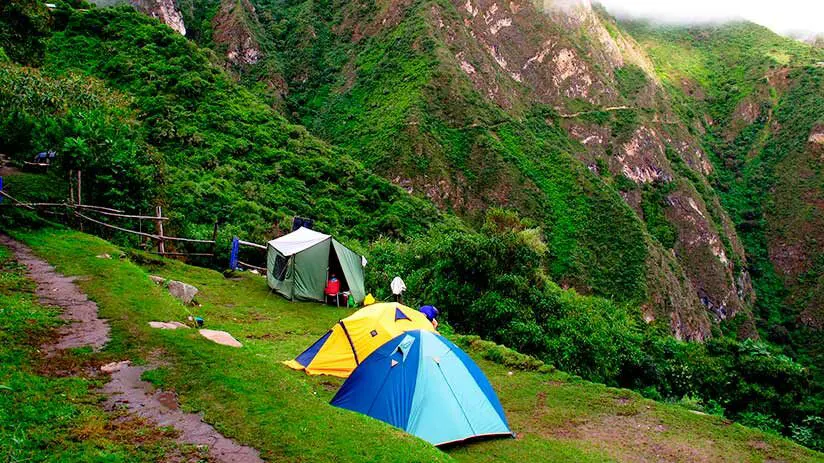
- Distance of trekking: 7 km.
- Trek duration: From 4 to 6 hours
- Highest point: Marampata 3,000 m.a.s.l.
- Gradient: Difficult
On the second day, we start early and climb steep hills, crossing streams and springs to reach Maranpata. In this small town at 3000 meters high, you will have lunch and get some air. This day is considered the most difficult of all. Starting the hike early is essential so you can stroll and arrive at the campsite before dark.
After lunch in Maranpata, you can rest for the whole afternoon. Or, if you prefer, you can continue downhill for some minutes more until you finally reach the Inca site. It is only about 100 meters below Maranpata. You can quickly visit before returning to the camp and spend a nice night.
3. The third day: Maranpata – Chiquisca
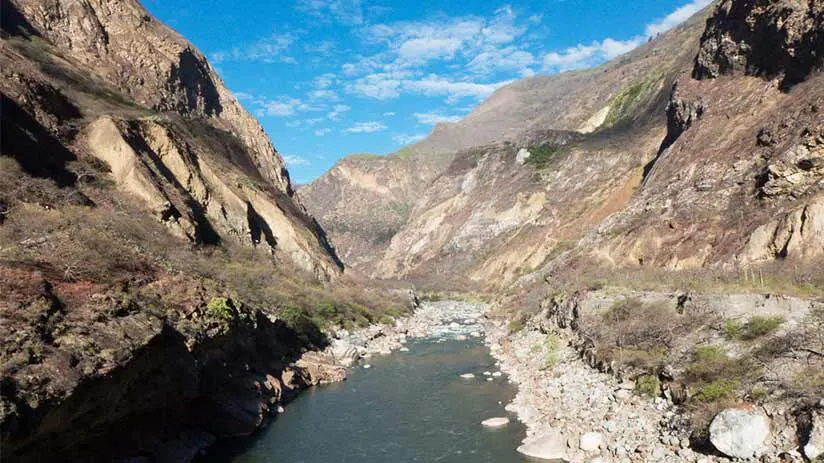
- Distance of trekking: 11 km.
- Trek duration: From 8 to 9 hours
- Highest point: Choquequirao 3,033 m.a.s.l.
- Gradient: Moderate
The third day is dedicated to exploring the complex’s ruins. You will have most of the day to discover every corner of this beautiful site calmly. You can explore the ruins at your own pace or with a certified guide.
It is a good idea to hear a little about the site’s history before visiting it on your own. You will likely have the site mostly to yourself, with only a few other visitors. The site is not easily accessible, and it doesn’t attract many tourists.
After you’ve explored the entire site, it’s time to go. You will start the downhill back to Playa Rosalina sometime in the afternoon. Unfortunately, the return route is the same as to reach the ruins, therefore you will appreciate the same landscapes and sites. Once you arrive at Playa Rosalina, you’ll pass the river and head to the Chiquisca camp zone. Some tours may leave this return trek for the fourth and final day. This depends on the weather and how fit the participants are.
4. The fourth day: Chiquisca – Cachora
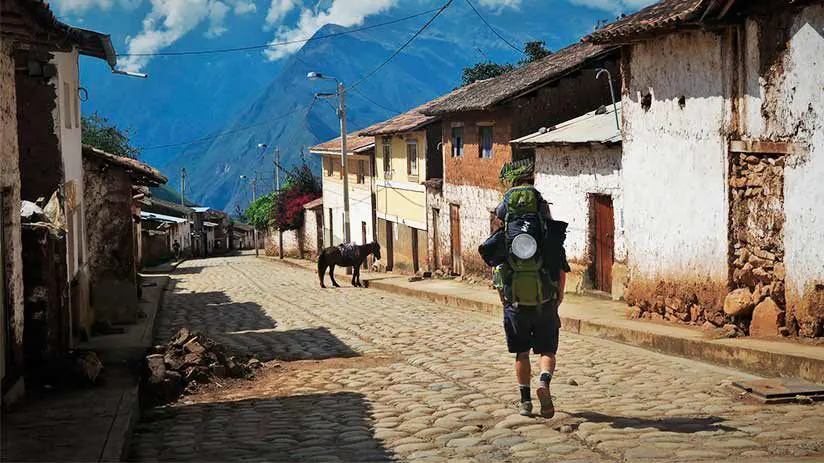
- Distance of trekking: 20 km. (If you take a taxi, 09 km.)
- Trek duration: From 2 to 3 hours
- Highest point: Kapuliyoq lookout 2,915 m.a.s.l.
- Gradient: Moderate
The fourth day will start with a beautiful sunrise in Chuquisca. Then, you will continue the climb to Capuliyoc’s lookout, where you’ll appreciate the condor’s flights. Afterward, you will be transported by car to Cachora and Cusco. Or, if you prefer, you can continue the trek, going down to Cachora once you have passed Capulliyoc.
Some tours let you visit Machu Picchu and its lesser-known sister on the last day when you reach Cachora. Either way, don’t miss out on this beautiful archaeological complex in Cusco, Peru.
Touring the citadel
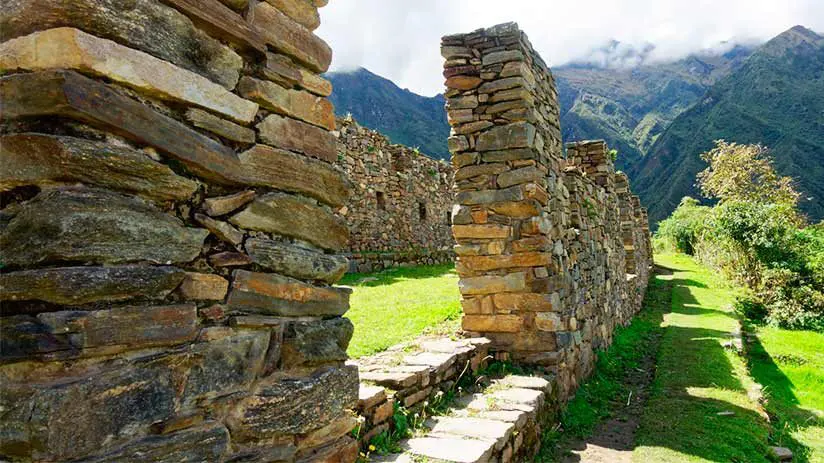
When you arrive, you’ll see the buildings are well-preserved, except for the doors and thatched roofs. This is why it’s often compared to visiting Machu Picchu. The site has ancient irrigation systems, llama terraces, and temples dedicated to the cult of water.
Inside the complex, you will find a system of water sources and channels linked to an aqueduct. In addition, you will also be able to appreciate a series of stone altars. These constructions are around the main esplanade, which at the same time is bordered by agricultural terraces.
The main ruins are scattered along the slopes of the central mountain. The different ruins are grouped into small “districts”. This urban design is believed to have been intended to designate social functions in the complex.
The Inca complex was divided into three main sectors: the highest sector contained warehouses, the mid-altitude sector contained the main Ceremonial center (La Plaza), and the lower sector to the south was reserved for ancestor worship.
As you may have noticed, visiting an archaeological site like Choquequirao without a guide (historian or expert in Inca culture) will be boring and a waste of time (except for those who visit the citadel for the second time). Therefore, we always recommend you visit Choquequirao with a tour guide.
Two alternative routes to Choquequirao
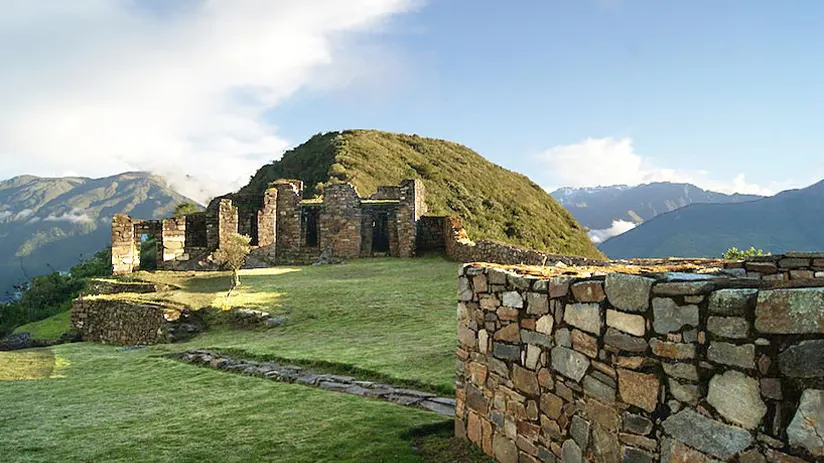
1. The route of Huaynapaca
The hiking route is similar to the classic one (the traditional route), 4 days of trekking but easier, however, you will not return through the same way out. On the last day, you will stay overnight at Villa Los Loros and take a taxi to Huainapa the next day. It is recommended for persons with no so good physical condition.
2. The route of Yanama
The route starts in Cachora and goes through the highlands in Sacred Valley, including Pinchinuyoc, Llactapata, and Machu Picchu. This article focuses on the ancient inca constructions. The experience lasts 9 days of trekking, beautiful landscapes, and fantastic fauna. At some point, the way joins the trekking path to Salkantay Snow. This experience is much more challenging but complete, the sister Inca citadels in a single route.
Campsites in Choquequirao
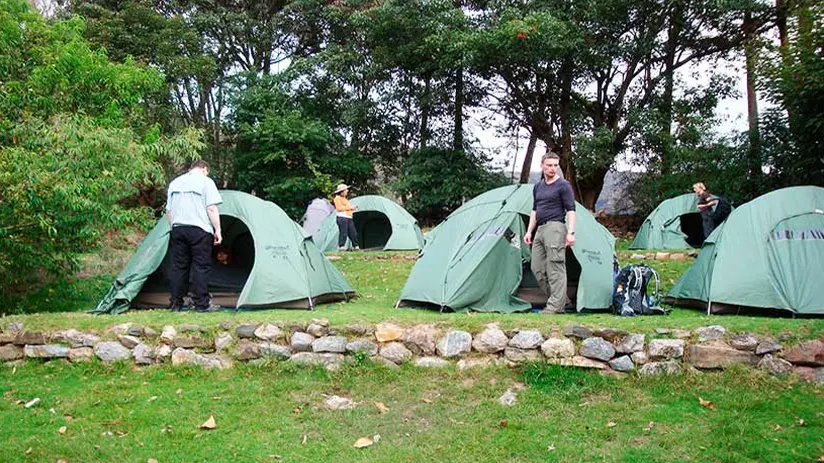
Throughout the route to get to the Inca citadel, you will find several campsites with necessary provisions, like:
1. Cachora
It is located at Km. 0, which means the star point of the route. Plenty of small stores, restaurants, and hotels surround it.
2. Cocamasana
It is on km. 16. The place offers amazing views of the valley and quiet camping zones. Unfortunately, it is not open most of the year.
3. Chiquisca
It is a payment campsite located on Km. 19 before reaching the rough descent until the river. It offers toilets with showers and some cooked food.
4. Playa de Rosalina
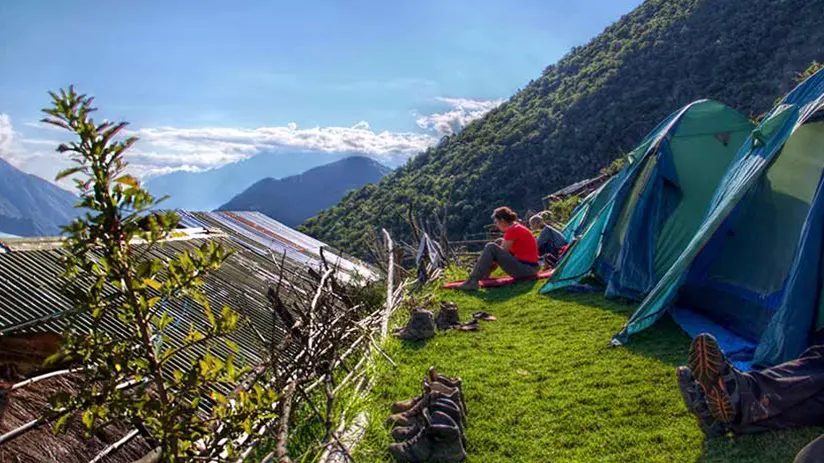
The paid campsite of Playa de Rosalina is 21 kilometers from the starting point of Cachora. Here, you will find a primary food store, showers, bathrooms, fire pits, and a simple kitchen where you will prepare your meals. Also, you will have a great campsite close to the river. In additional information, many visitors report that the camp lacks drinking water.
5. Alfonso
This campsite is located on Km. 22. It is a primary camp zone; there are no toilets or kitchen. The place can be flooded due to the heavy rains.
6. Santa Rosa Baja
It is a payment campsite situated on Km. 24 with bathrooms and showers. It is very close to a ranch where visitors will find a small food store and simple meals. Next to the place, a lovely family offers mules and horses to lighten the hike.
7. Santa Rosa Alta
It is a free campsite located on Km. 25, just passing a moderate stop that begins in Santa Rosa Baja. It is a comfortable place with facilities like bathrooms and a small meal store. Usually, the camp is closed.
8. Marampata
The tiny town of Marampata is situated on Km 28 and hosts several camp zones, a small hotel, and some stores to buy food. We recommend hiring mules here because the owner is very trustworthy.
The best time to visit it
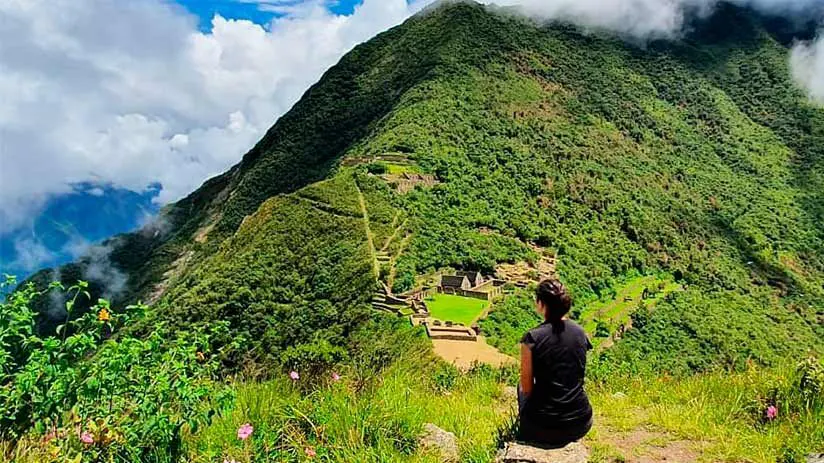
The forgotten sister of Machu Picchu is one of the most interesting unknown places in Peru. The old Inca site is on the Salkantay Snow foothills. It is in the Apurimac Valley.
This area is in the La Convencion province of Cusco. The archaeological site has a mild climate, with temperatures ranging from a high of 25ºC to a low of 4ºC. The temperature is around 14ºC. However, with other attractions, this Inca complex has a determined time to visit without mishaps.
1. Dry Season
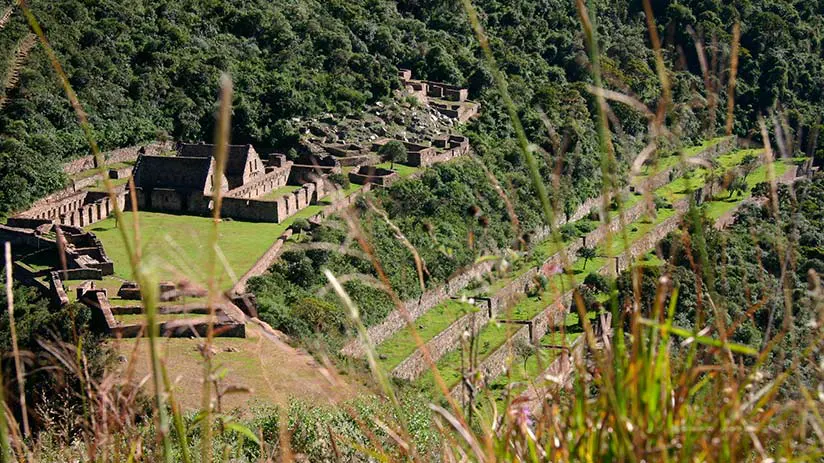
This season will welcome you from April to October with clouds that move quickly from one side to another, clear skies, and warm breezes. Occasional weak rains can occur at night. The temperature averages between 25ºC and 4ºC.
We recommend hiking up Choquequirao this season for all these factors.
2. Rainy Season
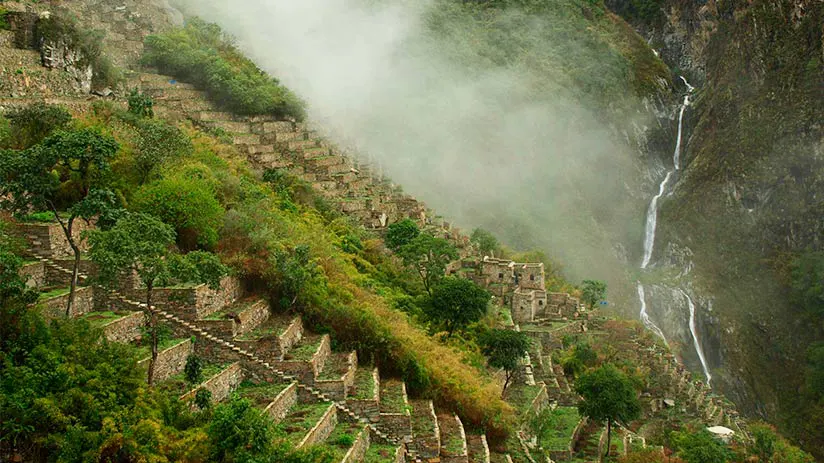
It begins in November and ends in March of the following year. Heavy rains, humid weather, and cloudy skies characterize this season. Avoid this season if you want to avoid getting muddy and sliding.
What to bring
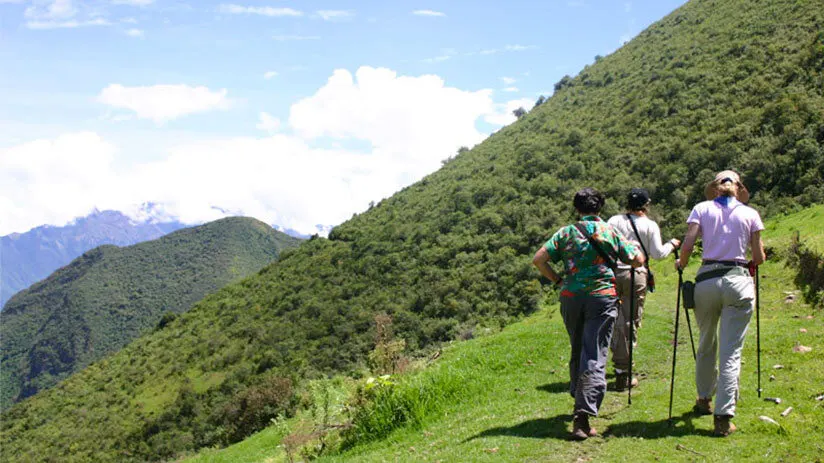
This trekking demands physical effort and suitable clothing for the challenge. Therefore, you will find valuable accessories to facilitate the excursion to the complex or any Machu Picchu Tours you plan to take.
- Trekking poles
- Cash
- Food for 3 days and 3 nights (at least)
- Sleeping bag
- Camping tents
- Identification document
- Toiletries
- Backpack for the trek
- Mosquito repellent
- Sunscreen
- Cap or hat
- Sunglasses
- Lantern
- Raincoat
- Water purifying tablets
Choquequirao on your own or within a tour?
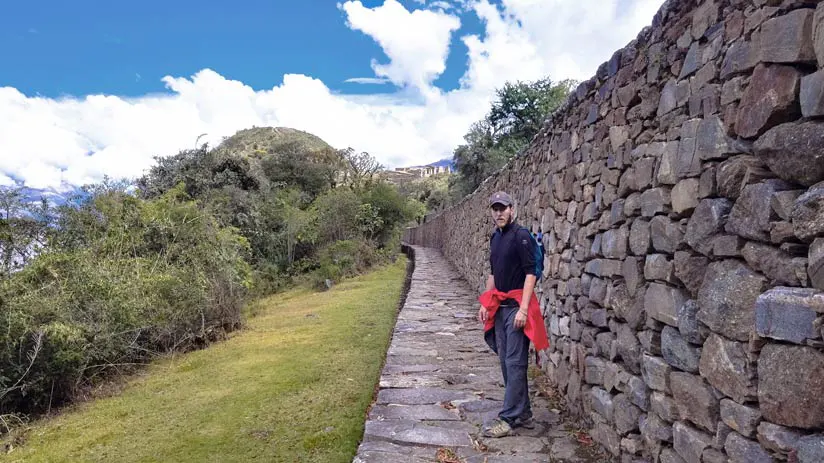
The trekking to the Inca citadel is well-signed, with camp zones, bathrooms, and more adventure facilities, like the Inca Trail route. The only difference with the famous path to Machu Picchu is the absence of rangers and a checkpoint at the beginning of the road. Therefore, many adventurers opt to trek by themselves. However, this modality has advantages and disadvantages.
1. By yourself
Advantages: As mentioned, the path to the ancient citadel is well-signed and has many tourist facilities: camp zones, bathrooms, showers, and little stores. If you take this experience alone, you will walk at your own pace and spend less money than hiring a tour from a travel agency.
Disadvantages: You’ll care about the logistics of the trip. That means caring about carrying your clothes, shoes, kitchen items, tend items, and other essential things. Besides, you can book hotels by yourself and take transportation to Cachora. Also, you’ll have to contact previously with a muleteer or with a camp zone manager for any emergency.
2. Within a tour
Advantages: With the assistance of a travel agency, you’ll not have to worry about any logistical facts like kitchen or tend items, hotels in Cachora, or other contingencies. You will only enjoy the experience by getting the best photos of the trip. You will get help during your trip. You will also benefit from your tour guide’s knowledge of the citadel and archaeological area.
Disadvantages: The only disadvantage in this sense is the cost. As you will see in the following lines, travel agencies usually charge between $500 and $1500. Another important fact is that you’ll not walk at your own pace but will follow the pace of the group and your tour guide.
The cost of visiting the ruins
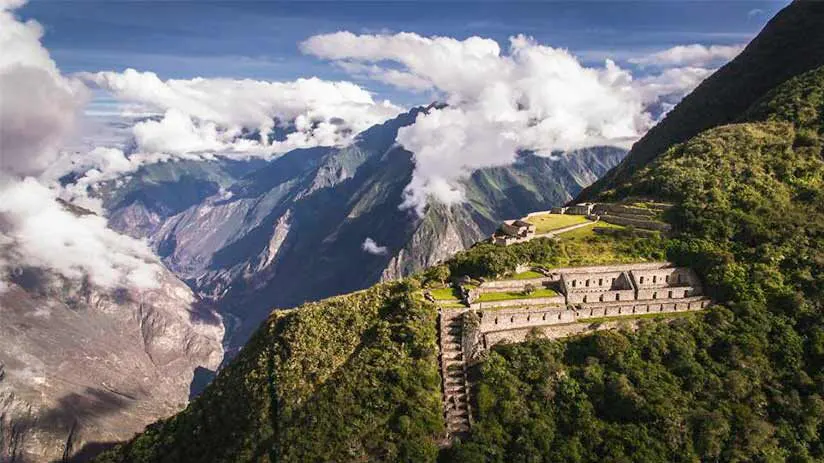
So, how much does it cost in general to be able to enjoy these ruins? This will depend greatly on the agency or operator you choose to start your tour. Most agencies and tour operators charge between $500 and $1500 for private or group tours.
Prices are generally the same. However, the cost may vary if you visit just the ruins or include them in a Machu Picchu tour. Or begin the tour from Cusco or Cachora town.
In the case of this last one, the price can drop considerably. (Around $500)
Rates depend heavily on the season you are traveling in and other factors. Despite this, we have prepared an approximate cost projection per person on a tour “by yourself”.
- Round-trip transportation from Cusco can cost between $30 to $50.
- The pre-accommodation in Cachora can be between $30 to $40.
- Camp fees can cost $20 or much less.
- A camping equipment rental can be between $60.
- Food and drinks from Cusco can cost $30 or more.
- The entrance price to the Inca complex is $18.
- While mule rental is optional, this can be between $120.
Please note that these costs are per person and approximate. Traveling with a group can save you money, as you can share costs for mules, camping gear, and places to stay. To give you an idea, an independent hike shouldn’t cost more than $200 per person.
Please with a group, the cost can be shared. Especially the cost of renting mules, camping, equipment, and accommodation. To give you an idea, an independent hike shouldn’t cost more than $200 per person. Besides, rates depend a lot on the season you are traveling in and other factors. Despite this, we have prepared an approximate cost projection per person on a tour “by yourself.” The fourth day will start with sunrise in Chuquisca. Then, you will continue the climb to Capuli.
An experience that is worth it
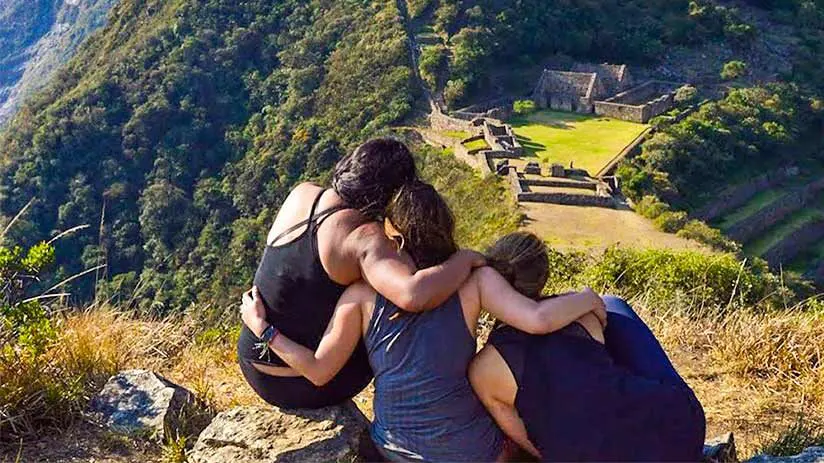
The whole experience, from the hike to the exploration of the ruins themselves, is a set of emotions that will take your breath away. Many consider the hike and the tour of the ruins to be one of the best Machu Picchu alternatives, if not the best.
One advantage of the route is that it is not usually populated by many other hikers, which provides a much more private experience. You can appreciate the landscapes at your own pace and pass through the villages while interacting with the locals and enjoying the flora and fauna.
In general, you will not find disadvantages to visiting this fantastic archaeological complex. Being one of the less famous places in Peru, this incredible route is often overlooked by many.
The truth is that It is much cheaper than Machu Picchu but equal in beauty. You will only have to submit to his demand because to access it you need a certain physical state. Still, the reward this complex brings is one without precedents.
“SOMEWHERE ON YOUR JOURNEY DON’T FORGET TO TURN AROUND AND ENJOY THE VIEW”
In conclusion, Choquequirao is a place worth visiting. If you have the time available, we believe that you will be able to appreciate these titanic ruins from a different perspective. Unlike Machu Picchu, you don’t have a limit to tour the ruins, which creates a much more free and personal experience. If you want to know more about the private tours of Machu Travel Peru, you can consult with our advisors.
